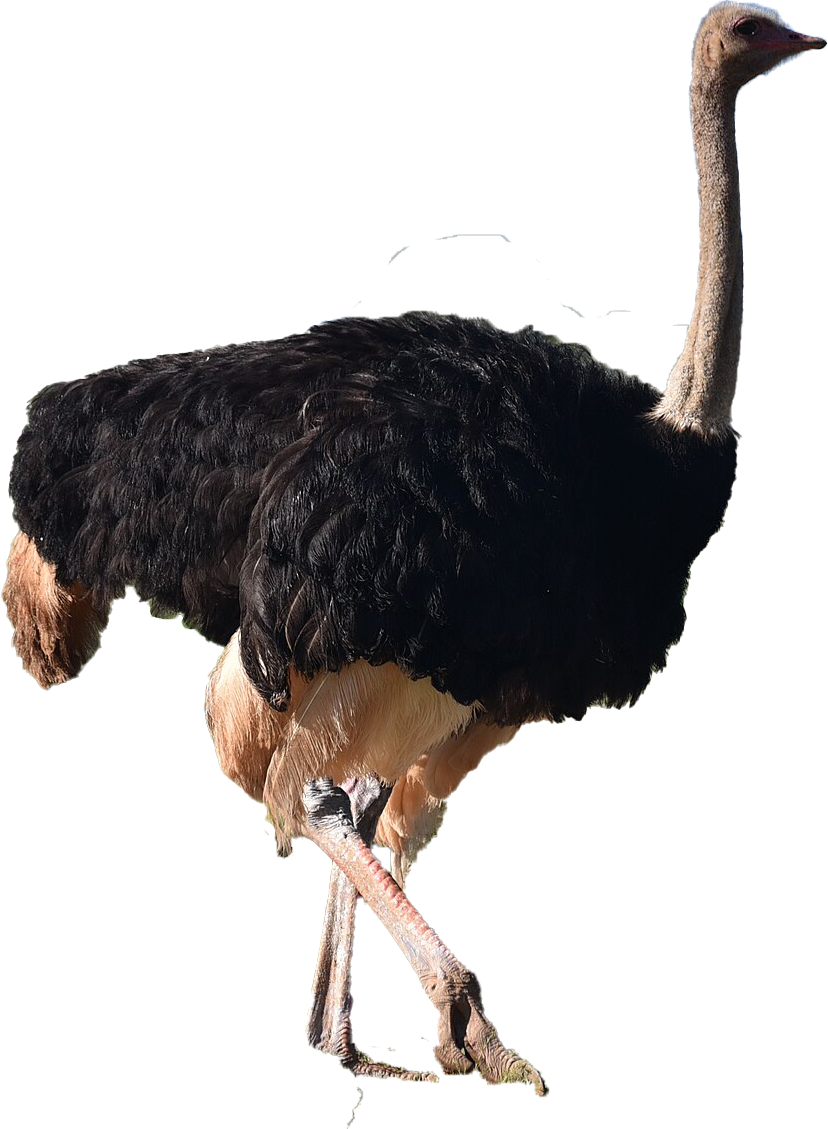
Description:
The common ostrich is the largest and heaviest living bird. Males stand 2.1 to 2.75 m tall and weigh 100 to 130 kg, whereas females are about 1.75 to 1.9 m tall and weigh 90 to 120 kg. While exceptional male ostriches can weigh up to 156.8 kg, some specimens in South Africa can only weigh between 59.5 to 81.3 kg.
Habitat:
Found south of the Zambezi and Cunene Rivers.
The ostrich is found in Angola, Botswana, Democratic Republic of the Congo, Namibia, South Africa, Zambia, and Zimbabwe
Diet:
The common ostrich's diet consists mainly of plant matter, though it also eats invertebrates and small reptiles.
Behavior:
It lives in nomadic groups of 5 to 50 birds. When threatened, the ostrich will either hide itself by lying flat against the ground or run away. If cornered, it can attack with a kick of its powerful legs. Mating patterns differ by geographical region, but territorial males fight for a harem of two to seven females.
The ostrich can run for a long time at a speed of 55 km/h (34 mph) with short bursts up to about 97 km/h (60 mph), the fastest land speed of any bipedal animal and the second fastest of all land animals after the Cheetah. The common ostrich is the largest living species of bird. It lays the largest eggs of any living bird. Ostriches are the most dangerous birds on the planet for humans, with an average of two to three deaths being recorded each year in South Africa.